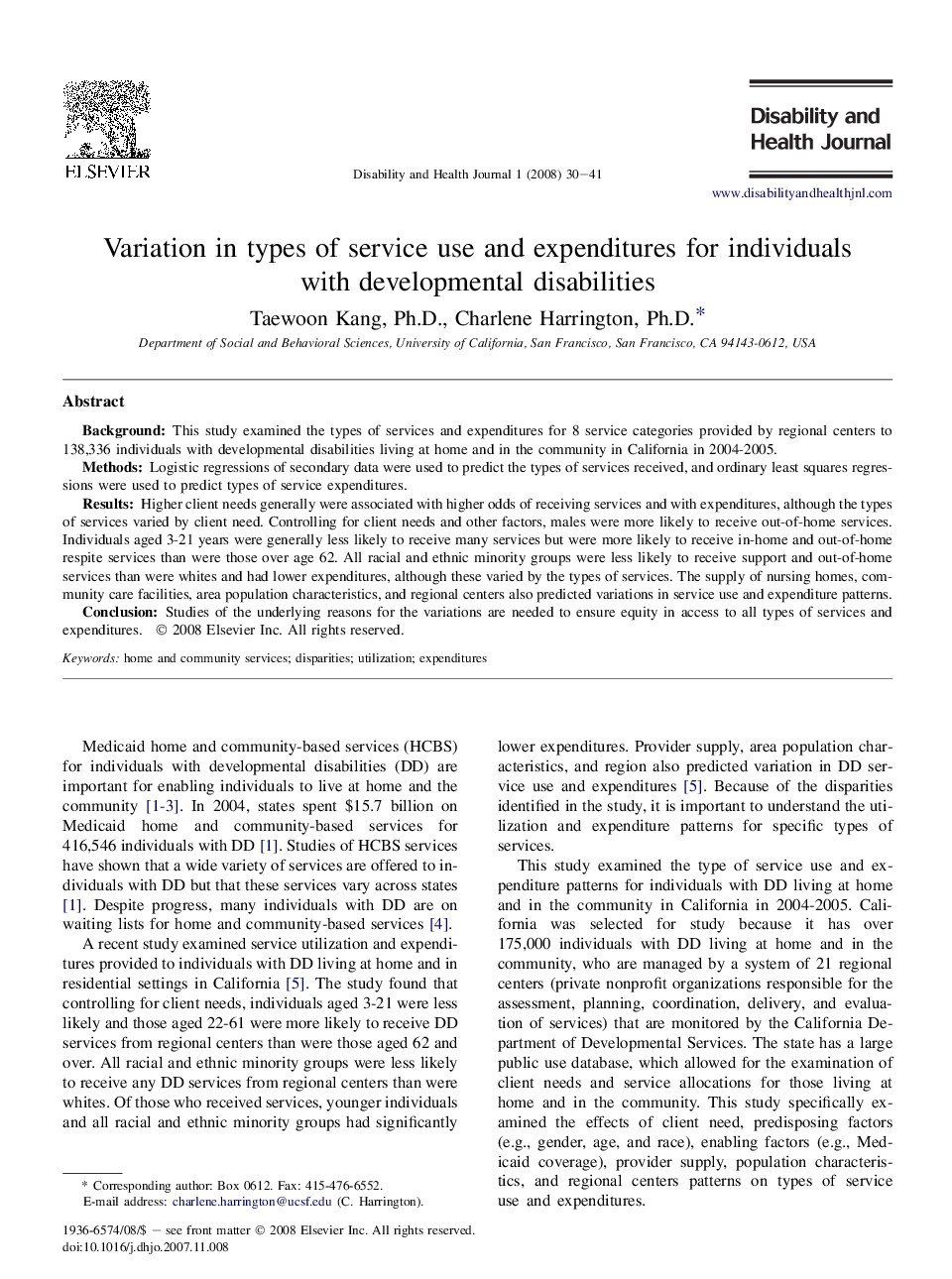| Article ID | Journal | Published Year | Pages | File Type |
|---|---|---|---|---|
| 4197732 | Disability and Health Journal | 2008 | 12 Pages |
BackgroundThis study examined the types of services and expenditures for 8 service categories provided by regional centers to 138,336 individuals with developmental disabilities living at home and in the community in California in 2004-2005.MethodsLogistic regressions of secondary data were used to predict the types of services received, and ordinary least squares regressions were used to predict types of service expenditures.ResultsHigher client needs generally were associated with higher odds of receiving services and with expenditures, although the types of services varied by client need. Controlling for client needs and other factors, males were more likely to receive out-of-home services. Individuals aged 3-21 years were generally less likely to receive many services but were more likely to receive in-home and out-of-home respite services than were those over age 62. All racial and ethnic minority groups were less likely to receive support and out-of-home services than were whites and had lower expenditures, although these varied by the types of services. The supply of nursing homes, community care facilities, area population characteristics, and regional centers also predicted variations in service use and expenditure patterns.ConclusionStudies of the underlying reasons for the variations are needed to ensure equity in access to all types of services and expenditures.
